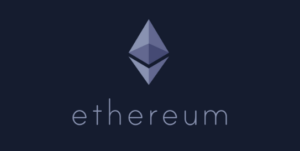Ethereum Layer-1 Revenue Plummets by 99% Despite Expansion of Layer-2 Solutions: Discover the Reasons

The layer-1 network revenue of Ethereum has sharply decreased by 99% since March 2024, despite an uptick in monthly users and rising daily transaction costs on Ethereum’s layer-2 solutions. Data from Token Terminal reveals that network fees hit a peak for the year on March 5, exceeding $35 million, just before the Dencun upgrade. This upgrade notably lessened fees for layer-2 transactions, reshaping the revenue dynamics for Ethereum’s base layer.
The introduction of “blobs” in March has played a pivotal role in the revenue decline. Blobs, a scaling and efficiency enhancement, enabled layer-2 solutions to process transactions more affordably without heavily relying on Ethereum’s base layer for data availability (DA). This efficiency has empowered layer-2 networks to offer reduced transaction costs, leading to fewer fees flowing back to the layer-1 network. Consequently, Ethereum’s layer-1 has witnessed a significant revenue decrease as the utilization of its DA services has dwindled.
Alongside decreased revenue, Ethereum’s fee structure has undergone significant alterations. Earlier in the year, higher gas usage had resulted in an increased burn rate for ETH tokens, maintaining the crypto’s deflationary nature. However, post the introduction of blobs, the burn rate has decreased, transitioning ETH into an inflationary phase. This shift has sparked concerns about its potential impact on ETH’s price, prompting some market watchers to advocate for adjustments to blob fees to rebalance the relationship between layer-1 and layer-2 networks and to bolster ETH’s deflationary position.
The Ethereum community has responded diversely to these developments. Ryan Berckmans, an Ethereum validator, has voiced support for the current state of layer-1 fees, contending that the success of layer-2 solutions has made Ethereum’s base layer more accessible for larger entities. Despite the revenue dip, Berckmans underscored that fees are not Ethereum’s primary objective; rather, they are a byproduct of the network’s utility.
In parallel news, Ethereum’s staking ecosystem continues to expand, with 34 million ETH staked and over 1 million active validators by August 26, showcasing robust engagement in the network’s proof-of-stake model. It is essential to note that this content is for informational purposes and should not be construed as financial advice. The opinions expressed in this article may include personal viewpoints and do not necessarily reflect The Crypto Basic’s stance. Readers are advised to conduct thorough research before making any investment decisions, as The Crypto Basic is not liable for any financial losses.


